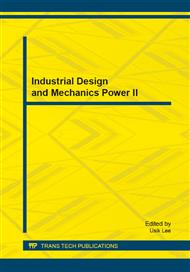p.535
p.540
p.544
p.551
p.555
p.560
p.564
p.568
p.572
Estimation on Aluminum Alloy Residual Stress Considering the Influence of Hole-Drilling Diameter
Abstract:
A method of hole-drilling to estimate residual stress of welding joint of 2219-T87 aluminum alloy is proposed based on numerical simulation and measurement test. The influence of drilling-hole diameter to welding residual stress is first analyzed by numerical simulation, and the optimal diameter is obtained as 4.0 mm. In accordance with the diameter, carry out a test on measuring welding residual stress. And the maximum residual stress is calculated as 123.2 MPa.
Info:
Periodical:
Pages:
555-559
Citation:
Online since:
October 2013
Authors:
Keywords:
Price:
Сopyright:
© 2013 Trans Tech Publications Ltd. All Rights Reserved
Share:
Citation:


